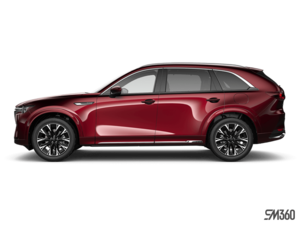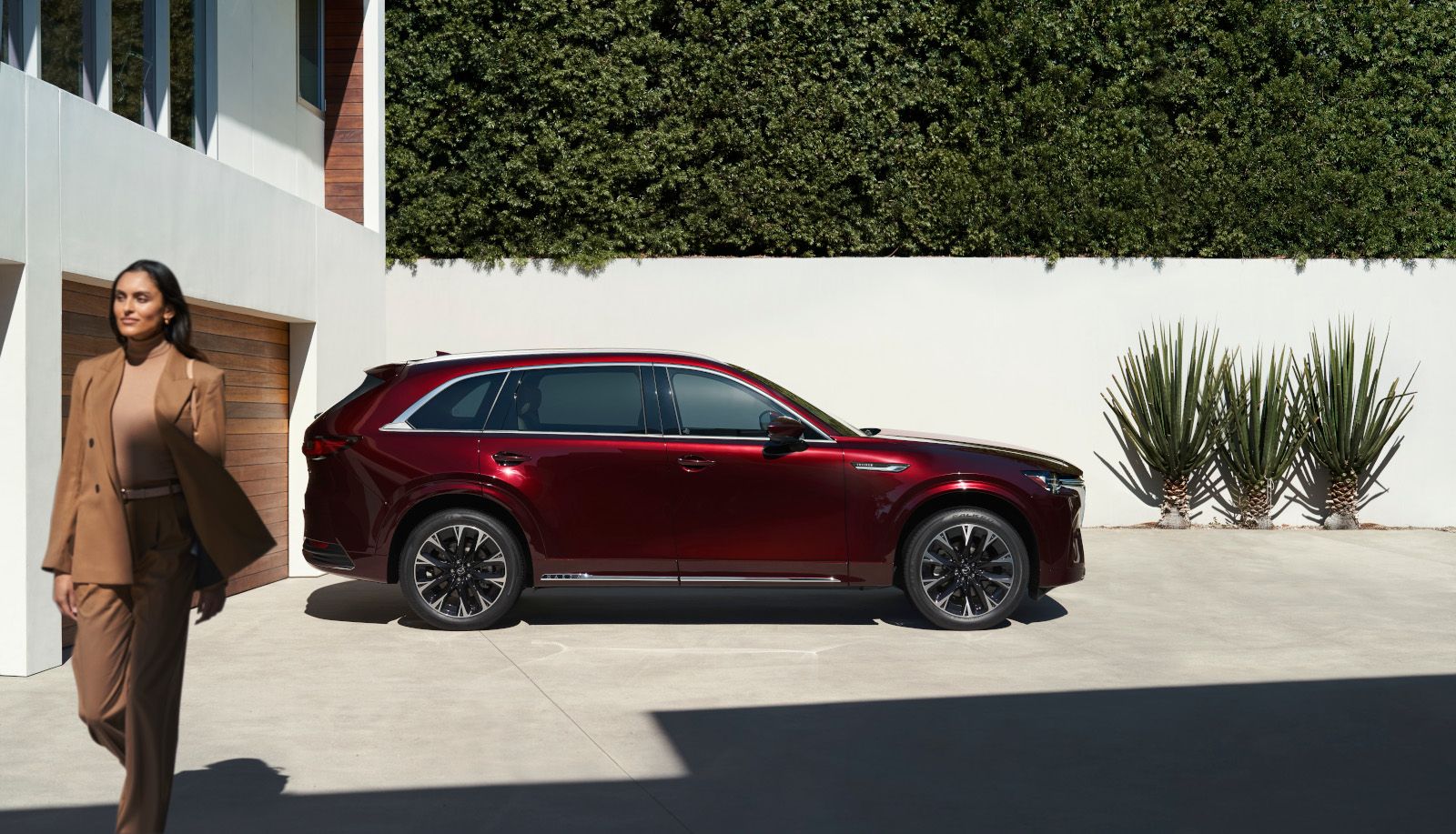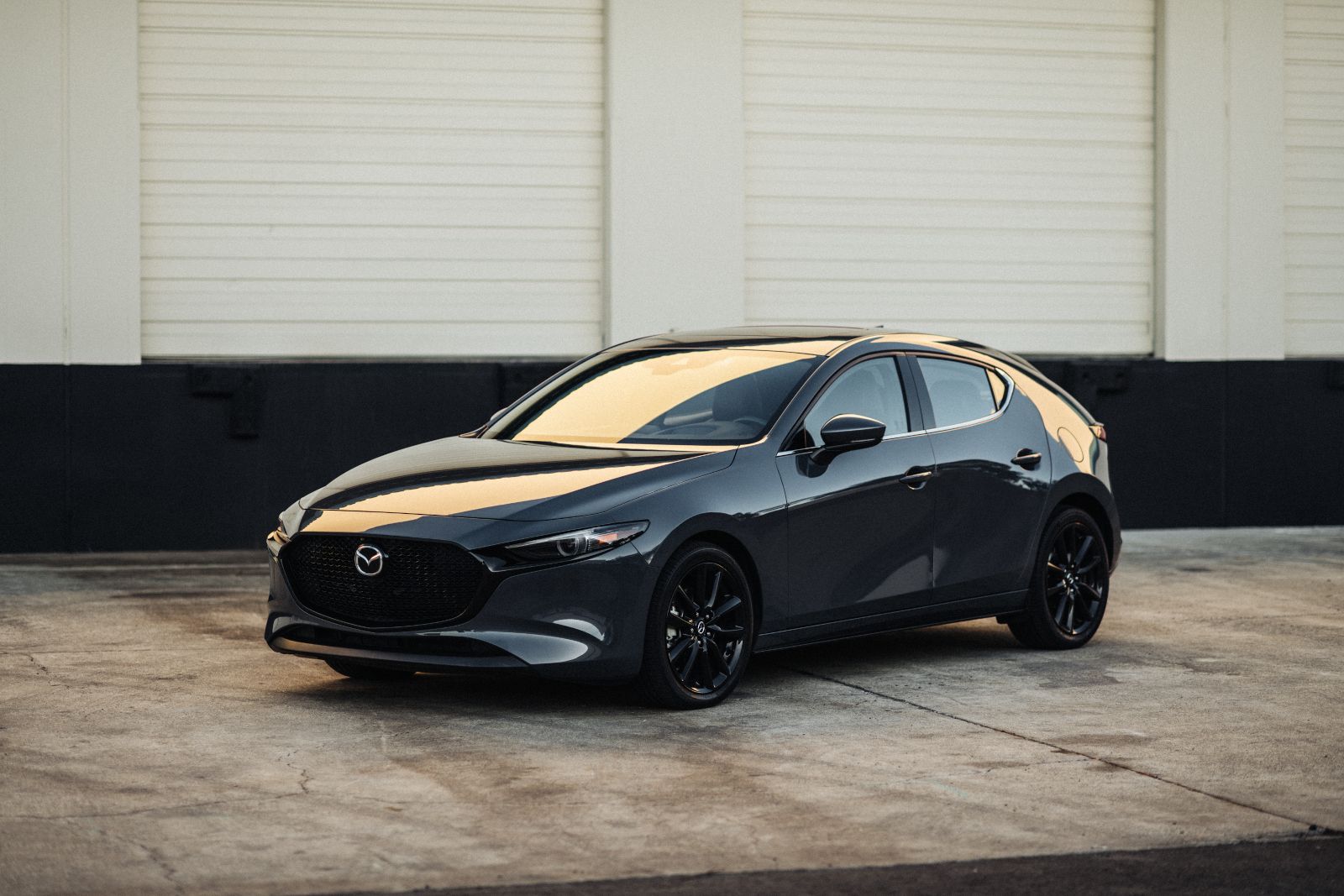Inline-Six vs. V6: Why the CX-90's Engine Configuration Changes Your Highway Drive
October 24 2025,
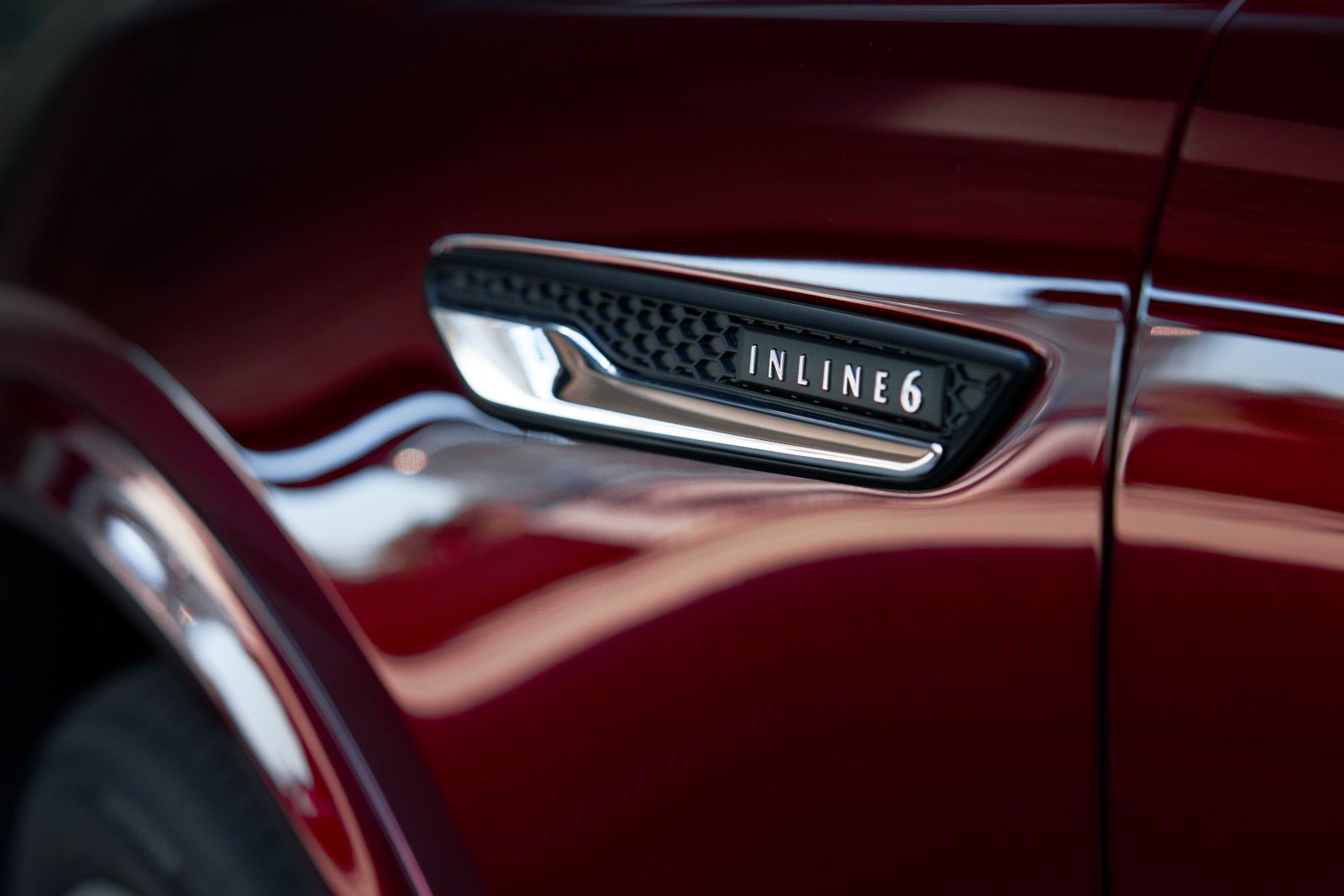
Most three-row SUVs use V6 engines because they fit efficiently under modern hoods and deliver adequate power. The 2025 Mazda CX-90 takes a different approach with its 3.3 L turbocharged inline-six engine paired with M-Hybrid Boost technology. This configuration choice affects more than just spec sheets—it changes how the vehicle feels during highway acceleration, mountain climbs, and daily driving across British Columbia.
The inline-six layout places all six cylinders in a single row, creating natural balance properties that V6 engines cannot match. For drivers tackling the Sea-to-Sky Highway's sustained grades or merging onto the Trans-Canada at highway speeds, this engineering difference translates into noticeably smoother power delivery and refined operation. The CX-90 offers the engine in two output levels: a standard 280 hp version running on regular fuel and a high-output 340 hp variant requiring premium fuel.
The Engineering Advantage of Inline Configuration
V6 engines arrange cylinders in two banks set at an angle, typically 60 or 90 degrees. This creates primary and secondary mechanical imbalances that require counterweights and balance shafts to manage vibration. The inline-six configuration eliminates these imbalances through its symmetrical layout—each piston's movement is naturally countered by another piston moving in the opposite direction.
This inherent balance means the CX-90's 3.3 L turbocharged inline-six operates with less vibration transferred to the cabin. On long highway drives from Burnaby to the Okanagan or during extended trips through mountain passes, this smoothness reduces fatigue for both driver and passengers. The engine doesn't need to fight against its own mechanical movements, allowing power to flow more directly to the wheels.
How M-Hybrid Boost Technology Enhances Performance
The CX-90's inline-six integrates with M-Hybrid Boost, a 48-volt mild-hybrid system that adds 16.9 hp and 113 lb-ft of torque during acceleration. The system uses a lithium-ion battery (0.33 kWh capacity) to provide immediate electric assist when you need extra power—during highway merges, passing maneuvers, or climbing steep grades.
This electric motor fills the gap that turbocharged engines sometimes create at low speeds. When you press the accelerator from a standing start or need quick response at city speeds, the electric motor delivers instant torque while the turbocharger spools up. The result is more linear acceleration that feels responsive across the entire speed range, particularly useful in stop-and-go traffic or when navigating Burnaby's hilly terrain.
Standard Output: 280 Horsepower on Regular Fuel
The standard CX-90 configuration produces 280 hp at 5,000–6,000 rpm and 332 lb-ft of torque at 2,000–3,500 rpm using regular unleaded fuel. This output handles daily driving and highway cruising with authority while maintaining reasonable fuel economy. The wide torque band means the engine delivers strong pull across a broad rpm range, reducing the need for frequent downshifts when climbing hills or overtaking on two-lane highways.
For families prioritizing running costs, the standard engine's ability to use regular fuel reduces ongoing expenses while still providing ample performance for British Columbia driving conditions. The engine pairs with an eight-speed automatic transmission and standard i-Activ all-wheel drive, delivering power smoothly to all four wheels.
High-Output Variant: 340 Horsepower With Premium Fuel
The GT-P and Signature trims offer the high-output version, generating 340 hp at 5,000–6,000 rpm and 369 lb-ft of torque at 2,000–4,500 rpm when fueled with 93-octane premium. This represents Mazda's most powerful mass-production gasoline engine and transforms the CX-90 into a vehicle capable of towing up to 1,588 kg (3,500 lb) while maintaining confident acceleration.
The additional 60 hp and 37 lb-ft of torque make themselves known during highway passing, mountain climbs, and trailer towing. The high-output engine maintains its composure under load, continuing to deliver smooth power even when the vehicle is carrying a full complement of eight passengers and cargo heading to a weekend destination across the province.
Real-World Driving Scenarios in British Columbia
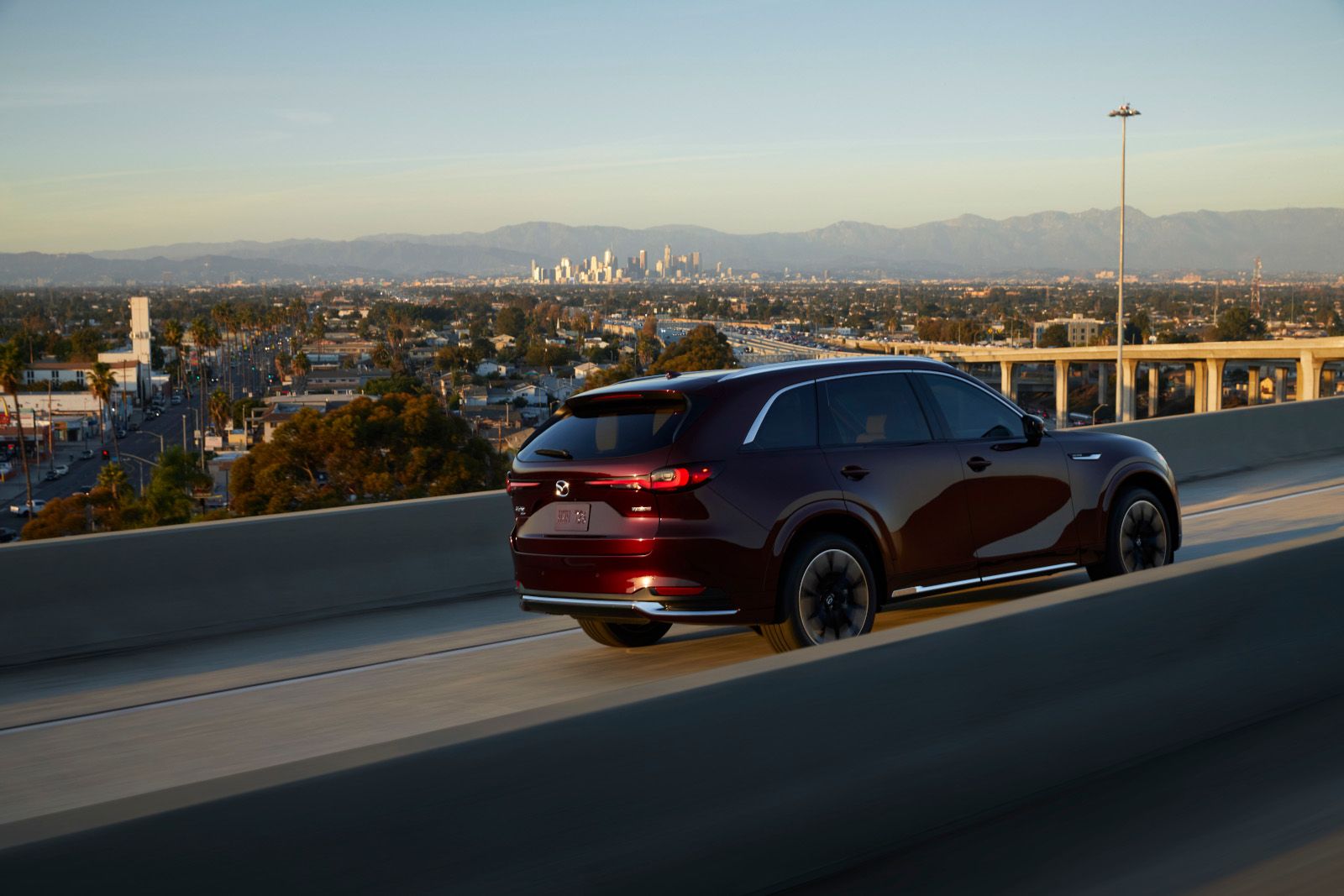
Sea-to-Sky Highway Climbs
The sustained grades between Squamish and Whistler test engine refinement. The CX-90's inline-six maintains smooth operation while climbing, with the M-Hybrid Boost system providing additional torque when needed. The engine doesn't become coarse or strained under load, maintaining a refined character that higher-revving V6 engines often sacrifice during extended climbs.
Coquihalla Highway Cruising
Long-distance highway driving reveals an engine's true refinement. The inline-six's natural balance and wide torque band allow relaxed cruising at highway speeds without excessive engine noise or vibration intruding into the cabin. Overtaking slower traffic requires a brief throttle application rather than a multi-gear downshift, keeping passengers comfortable during passing maneuvers.
Urban Stop-and-Go Driving
Around Burnaby and Metro Vancouver, the M-Hybrid Boost system improves low-speed throttle response, making the large SUV feel more alert in traffic. The electric motor's immediate torque compensates for turbo lag, delivering smooth acceleration from stoplights and during parking lot maneuvers.
Comparison: Inline-Six vs. V6 Competitors
|
Feature |
Mazda CX-90 Inline-Six |
Typical V6 Three-Row SUVs |
|---|---|---|
|
Configuration |
Inline-six + turbo |
V6 (naturally aspirated or turbo) |
|
Balance |
Inherently balanced |
Requires balance shafts |
|
Power Delivery |
Linear across rpm range |
Often peaky or relies on higher revs |
|
Mild Hybrid |
Standard 48V system |
Often absent or optional |
|
Fuel Requirement |
Regular (standard) / Premium (high-output) |
Varies by manufacturer |
The inline-six configuration offers measurable advantages in smoothness and refinement, while the V6 layout provides packaging efficiency that some manufacturers prioritize over engine character. The CX-90's engineering choice favors driving experience and long-term refinement.
Additional Performance Features
The CX-90 includes Mazda Intelligent Drive Select (Mi-Drive) with Normal, Sport, Off-Road, and Towing modes. These modes adjust throttle response, transmission shift points, and all-wheel-drive torque distribution to suit different driving conditions. Sport mode sharpens throttle response for more aggressive driving on winding roads, while Towing mode optimizes transmission behavior when hauling trailers.
Kinematic Posture Control (KPC) works with the suspension to reduce body roll during cornering. The system applies subtle braking to the inside wheels during turns, helping the CX-90 maintain a more level posture and improving tire contact with the road surface. This enhances stability and passenger comfort during highway lane changes and curved on-ramps.
The Long-Term Refinement Question
Inline-six engines have historically proven durable and smooth-running over extended service lives. The configuration's natural balance reduces internal stress and vibration, potentially contributing to long-term mechanical refinement. For families planning to keep their vehicle through multiple years of British Columbia driving—from coastal highways to mountain passes—this engineering approach prioritizes lasting smoothness.
The CX-90's 3.3 L turbocharged inline-six with M-Hybrid Boost technology represents a deliberate engineering choice that affects daily driving character, highway refinement, and long-term ownership experience. Visit Metrotown Mazda in Burnaby to experience how this powertrain configuration translates into real-world performance on British Columbia roads.



